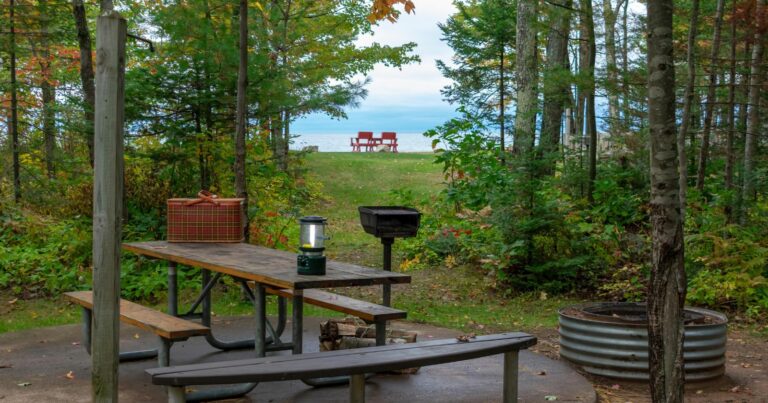Understanding Appalachian Trail Camping Regulations
With over 2,000 miles of rugged scenic trail spanning 14 states, the legendary Appalachian Trail is on every thru-hiker’s bucket list. As you plan your own epic AT adventure, visions of camping under the stars alongside alpine summits dance in your head. But before pitching your tent just anywhere along the trail, know this – you can’t legally set up camp wherever you please on the AT.
Unlike some long distance trails that allow at-large camping, the AT has a mosaic of land jurisdictions and rules that dictate where you can and can’t camp. The trail corridor weaves through federal, state, local and even private lands, each with their own camping regulations. With some pre-trip research into guidelines based on where you’ll hike, plus respect for leave no trace principles on the trail, you’ll stay in compliance while enjoying your AT odyssey.
Let’s dig into the ins and outs of camping on this iconic footpath, so you can focus on the joys of hiking and avoid any headaches from unintended violations. Just remember, outdoor ethics and “pack it in, pack it out” make the magic of the AT possible.
Why Appalachian Trail Camping Isn’t Free-For-All
Unlike some long trails that allow at-large backcountry camping, the AT corridor consists of:
- Federal land (National Forest, National Parks)
- State parks/forests
- Municipal parkland
- Some private property
Each agency or landowner sets camping policies for their section of trail. So AT hiking requires research into the varying rules based on where your route travels through.
Shelters provide one option for legal overnighting on the trail. But tent camping requires awareness of designated sites, dispersed camping areas, and prohibited locations. This patchwork highlights the need to be an informed and conscientious AT camper.
Key Camping Approaches on the AT
As you plan your itinerary, get to know rules governing various camping options:
Designated Tent Sites
- Available at some shelters/campgrounds
- Must be reserved ahead on recreation.gov
- Offer cleared tent pads, privy, food storage
Dispersed Camping
- Allowed near most shelters within certain limits
- Follow leave no trace principles
- Note any area-specific night limits or closure
Shelters
- Provide sleeping platform, privy, water source
- Often first-come, first-served
- Some shelters require fees or reservations
Understand Agency-Specific Camping Policies
The AT passes through 14 different states over lands managed by an array of government agencies. Here’s a snapshot of key regulators:
National Park Service
Manages AT sections through Shenandoah NP and Great Smoky Mountains NP. Camping only permitted in designated sites that must be reserved ahead.
U.S. Forest Service
Much of AT runs through National Forest land. Follow their dispersed camping guidelines of sites at least 50-200 feet from trails/water.
Appalachian Trail Conservancy
Nonprofit that oversees entire AT corridor. Sets overall policy but defers to local land rules.
State Parks/Forests
State land entities like Virginia’s Dept. of Conservation set designated site rules for AT segments crossing their property.
Municipalities
Some local city/county parks prohibit camping or require permits for segments near housing or infrastructure.
Where Not to Camp on the AT
While camping opportunities abound on the AT, some areas are completely off limits. Avoid:
- Near trailheads, parking areas, roads
- Picnic sites, viewpoints, day-use areas
- Inside or adjacent to privies or shelters
- Within view of houses, roads, or businesses
- Sections posted with No Camping signs
Leave no trace ethics apply for any AT overnight site. Follow the hiker’s code and work to minimize your impact.
Planning Your Appalachian Trail Camp Itinerary
A successful AT thru-hike relies on strategic planning for resupply, mileage and desired camping style. Assemble relevant intel with these steps:
Break the Trail into Sections
Review maps to divide your planned route into logical multi-day segments between resupply points. Note major trailheads or road crossings as potential section endpoints.
Research Camping Regulations on Each Section
Use tools like the Appalachian Trail Conservancy’s camping dashboards and interactive map to identify camping policies governing each section based on the managing land agency.
Make note of locations with designated sites, dispersed camping areas, shelters requiring fees/reservations, and any segments with camping prohibited.
Scout Campsites in Advance
Use blogs, videos and hiker feedback to pinpoint optimal legal campsites along your mapped route. Note prime picks near reliable water sources or with epic views.
Apps like Guthook Guides display camp options and can facilitate on-trail navigation.
Reserve Sites Requiring Permits
Book designated campsites through recreation.gov portal up to six months in advance for key overnight locations on your itinerary. Popular frontcountry sites in national parks book out quickly.
Budget Time for Alternates If Needed
Leave wiggle room in your schedule in case first-choice campsites are occupied. Have backup options identified in advance to ensure you have compliant legal places to overnight along the full route.
Being prepared and flexible will allow you to relax and enjoy your AT odyssey while responsibly camping on this treasured trail.
Executing Leave No Trace and Ethics While Camping on the AT
The Appalachian Trail’s continued accessibility relies on hikers practicing responsible recreation and stewardship. Commit to leaving no trace with these tips:
Uphold Pack-In, Pack-Out
Carry all trash out and do not bury waste. Food scraps attract wildlife. Never leave leftover food or microtrash like wrappers behind. Carry out TP.
Avoid Campfire Impacts
Many AT areas restrict campfires. Where allowed, use designated fire rings or mound rings of soil to contain fires. Use existing wood piles before gathering. Fully extinguish remains.
Camp on Durable Surfaces
Stick to bare ground or well-used sites. Avoid delicate vegetation, soils and riparian habitats. Rotate tent/sleeping pad locations nightly.
Bury Waste 6-8 Inches Deep
Dig catholes 200 feet from water, trails or sites. Pack out all TP. Use biodegradable soap sparingly if bathing. Avoid introducing any chemicals.
Be Considerate of Sound
Avoid loud voices or music. Sound carries easily in natural areas. Be aware of other hikers and maintain peaceful evenings.
Adhere to Night Limits
Respect nightly limits where established. Don’t occupy prime sites for multiple days. Allow everyone a chance to enjoy scenic camping spots.
We all share responsibility for safeguarding the AT experience. Focus on common courtesy and mindfulness through your journey.
Key Gear to Pack for AT Camping
Overnight gear for AT hikers emphasizes streamlined essentials to reduce pack weight over long miles. Focus your kit on:
Lightweight Shelter
A simple freestanding tent or shaped tarp offer shelter from elements while keeping weight minimal. Look for durable, waterproof materials.
Compact Sleep System
For summer hiking, a 40-degree sleeping bag plus closed-cell foam or inflatable sleeping pad provide insulation and comfort.
Portable Water Treatment
Filter or purifying tablets allow you to drink from streams or springs vs. packing gallons of water. Choose fast flow rates.
Multi-use Cooking Supplies
Items like foam bowls, sporks and insulated mugs do double duty for meals and hot drinks.
Odor-Resistant Food Storage
Hanging or bear canister food storage protects from critters. Use zip-top bags to limit odors.
Headlamp or Lantern
Illuminate nightly camp chores and night trips to the privy. Favor lightweight, long-lasting LED models.
First Aid/Tool Kit
Carry essentials like blister pads, bandages, knife, lighter, biodegradable soap and duct tape.
Thoughtfully curating your backpacking gear helps keep pack weight manageable over long days and miles.
Avoiding Common AT Camping Mistakes
While your enthusiasm for the Appalachian Trail is commendable, avoid rookie mistakes that can negatively impact the outdoors and your fellow hikers:
Camping Outside of Designated Areas
Adhere to designated tent pads or accepted dispersed zones near shelters. No bushwhacking or clearing unauthorized sites.
Overcrowding Campsites
Limit group sizes and don’t exceed site capacity. Be generous judging good spacing from other hikers.
Excessive Noise/Light Pollution
Avoid loud music, conversations or bright lighting to be respectful of the natural setting and other visitors.
Leaving Food Accessible to Wildlife
Properly hang bags from tree limbs or use critter-proof containers like bear canisters to store food securely.
Inadequate Waste Disposal
Pack out all trash. Bury human waste and toilet paper 6-8 inches underground in catholes located at least 200 feet from water sources or trails.
Ignoring Campfire Bans
Observe seasonal and location-specific campfire prohibitions which are in place to reduce wildfire risk and impacts.
Overstaying Time Limits
Abide by any posted night limits for shelters or camping zones. Don’t monopolize coveted spots.
Prioritizing LNT principles preserves the AT for all to enjoy. Be part of the solution in protecting this special places.
Conclusion
While the Appalachian Trail traverses incredible scenery, you can’t legally set up camp just anywhere along the trail’s 2,190 miles. The patchwork of jurisdictions along the corridor means researching camping regulations relevant to your route.
Proper planning provides peace of mind that your overnight stops adhere to designated sites, accepted dispersed areas near shelters, and rules of land management agencies along your route. Focus on responsible minimal impact camping.
Your role in safeguarding the AT will reward you with a long lifetime of adventures. Use this guide as a springboard to plan your own epic AT hike while protecting the landscapes you travel through one beautiful footfall at a time.







